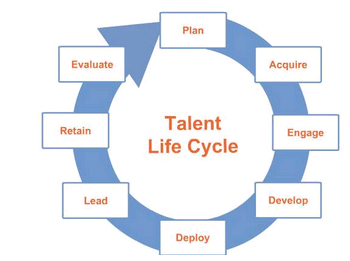The following process of best practices in talent management Process coupled with state-of-the-art enabling technology to support measurable talent and business outcomes are achieved.
- Planning: Start with a comprehensive talent Audit that aligns workforce and that enables enterprise to build a powerful talent pipeline to Top Performing Teams. Building each department with people who are similar to current Top Performers enables better levels of engagement between stakeholders at all levels of the enterprise, increases job performance, and improves business results.
- Acquisition: Apply state-of-the-art science and technology; changing the costly hiring funnel to an efficient talent acquisition engine; preventing you from hiring 85% of the people you would normally hire. Having the ability to attract, select and hire the Right Talent directly impacts you ROI and bottom line.
- Engagement: Having and engaging more top Performers is a precursor to higher levels of commitment and discretionary effort. American Incite uses the only employment pre-selection instrument that taps the hearts and minds of employees; proven to increase the number of Top Performers.
- Development: Understanding present and future workforce needs is essential to executing a good strategy. Apply pre-employment protocols to align and distribute the tasks of people and teams. When tasks are distributed properly people more easily achieve higher levels of engagement, performance, and success.
- Deployment: Deploy the solution to solve the challenges of deploying the right people into jobs that dovetail with each person’s core innate unchanging nature, the right talent in the right place doing the right things at the right time – all day long.
- Leadership: Apply dynamic and conflict resolution protocols, to align leadership to the right talent, training, and management skills at all levels. Aligning core capacities to core competencies creates a talent mindset that supports individuals and teams throughout the enterprise. This helps increase performance by creating a talent culture designed to attract, develop, engage, and retain people in jobs they were meant to do and love doing.
- Retention: Aligning core capacities to core competencies makes it much easier to maintain a high rate of renewed attraction – aka retention. Retention is easier when employees are meaningfully engaged in their work and supported by management. ROI improves and business outcomes increase when an organization has tools that enable management to develop organizations staffed with the “right people” doing the “right jobs”.
- Evaluation: Strategic Talent Alignment drives better business outcomes from high cumulative impacts along the entire talent management chain. More of the right people in the right seats inevitably translate into a more productive environment. Investments on the front end of human capital asset management practices result in reduced processing, improved assessment, and higher quality selection and a better ROI.


